This NABH Issue Brief highlights changes to coverage for substance use disorder (SUD) treatment services that the Centers for Medicare & Medicaid Services (CMS) included in its 2021 Medicare Physician Fee Schedule (PFS) and other final rules.
The PFS rule also contains many changes related to telehealth for substance use disorder (SUD) services. For a review of these modifications, please see NABH Issue Brief CMS Expands Medicare Telehealth Coverage for Mental Health and Addiction Treatment Services.
SECTION I: PFS and Other Rules
- CMS adopted the proposal to expand the PFS bundled payments to include all SUDs, not just OUD treatment services.
-
- To avoid duplicate billing for treating individuals who require treatment for more than one substance, HCPCS codes G2086-G2088 should not be billed more than once per month.
2. The agency adopted a new code to reimburse for medication assisted treatment (MAT) and additional services in the emergency department. The drug is paid for separately. There are no minimum number of minutes required. The following code was established for this purpose:
-
- HCPCS code G2213: Initiation of medication to treat OUD in the emergency department setting, including assessment, referral to ongoing care, and arranging access to supportive services. (List separately in addition to code for primary procedure).
3. The Initial Preventive Physical Examination (IPPE) and Annual Wellness Visit (AWV) was modified to include a) screening for potential SUDs and b) review of any current opioid prescriptions. CMS adjusted the valuation of these services to reflect the changes in value for office/outpatient E/M visits to which they are cross-walked.
4. CMS finalized the proposal to make the Query of PDMP measure under the Electronic Prescribing objective for MIPS eligible clinicians an optional measure eligible for 10 bonus points in CY 2021, an increase of five points from last year.
SECTION II: Coverage for OUD Treatment Services in OTPs
Nasal Naloxone
- CMS revised the definition of OUD treatment services to include short-acting opioid antagonist medications, such as naloxone, including nasal and injectable forms.
-
- CMS finalized the proposed drug costs of ASP+0 for nasal naloxone. CMS noted NABH’s concern related to pricing methodology for nasal naloxone and indicated it will monitor utilization of claims data to determine whether payment policies are suppressing naloxone access and need changes in future rulemaking.
- Injectable naloxone is based on contractor pricing. CMS will monitor the data to determine typical dosages and national pricing in future rulemaking.
2. The agency revised its definition of OUD treatment services to include overdose education. The reimbursement rate for overdose education is $2.53. Payments are attached to the provision of naloxone (see Naloxone add-on codes below).
-
- CMS will consider the need for independent coding for overdose education in future rulemaking.
3. Naloxone add-on codes consist of both a drug component and a non-drug component that would account for the provision of overdose education each time the OTP furnishes naloxone.
-
- HCPCS G2215: Take-home supply of nasal naloxone (provision of the services by a Medicare-enrolled Opioid Treatment Program); list separately in addition to code for primary procedure.
| Drug Cost |
Non-Drug Cost |
Total |
| 89.63 |
2.53 |
92.16 |
-
- HCPCS G2216: Take-home supply of injectable naloxone (provision of the services by a Medicare-enrolled Opioid Treatment Program); list separately in addition to code for primary procedure.
| Drug Cost |
Non-Drug Cost |
Total |
| Contracted Price |
2.53 |
Contracted Price |
4. CMS noted that the brand and authorized generic formulation of the auto-injector naloxone have been discontinued. Therefore, an add-on code for auto-injector naloxone was not finalized.
5. The proposed frequency limit on Medicare payments to OTPs for naloxone was finalized at one add-on code (HCPCS code G2215 or G2216) every 30 days.
6. However, CMS noted NABH’s clinical concern about limiting naloxone and allowed for exceptions to the frequency limitation when it is a medically reasonable and necessary part of the treatment for OUD (e.g., when the beneficiary overdoses and uses the initial supply). Exceptions must be documented in the medical record.
7. CMS finalized its proposal to recoup duplicative payments of naloxone from the OTPs, based on the rationale that as coordinators of patient care, OTPs are best positioned to know whether naloxone is part of the OTP treatment plan or is supplied by another provider or supplier.
8. CMS finalized enrollment through use of Form CMS-855A (Medicare Enrollment Application for Institutional Providers) OR CMS-855B (Medicare Enrollment Application: Clinics/Group Practices and Certain Other Suppliers).
-
- OTPs currently enrolled via CMS-855B may switch to enrollment via CMS-855A without an additional site visit and, if applicable, fingerprinting. This is also true if an OTP is currently enrolled under CMS 855-A and switches to CMS-855B.
- The effective billing date that was established for the OTP under the original enrollment continues to apply.
- Application fees still apply.
9. As proposed, CMS finalized that periodic assessments (add-on) via audio-visual technology require a face-to-face interaction.
-
-
- Therefore, periodic assessments are permitted to continue after the public health emergency ends but are not permitted to be performed via audio-only
- Audio-only is permitted to be included as part of the bundled rate but not as an add-on code.
- Periodic assessments are permitted when medically necessary and documented in the medical record.
10. CMS confirmed the permitted use of “standard billing cycles” in which episodes of care for all patients begin on the same day of the week and “weekly billing cycles” that vary across patients based on patient admission date (or when Medicare billing began).
11. CMS did not finalize its proposal to stratify the bundle.
-
- CMS will consider refinements to account for resource variation for different service intensity, such as induction and maintenance periods.
Please click here for comprehensive information about billing and payment and here for comprehensive information about enrollment.

